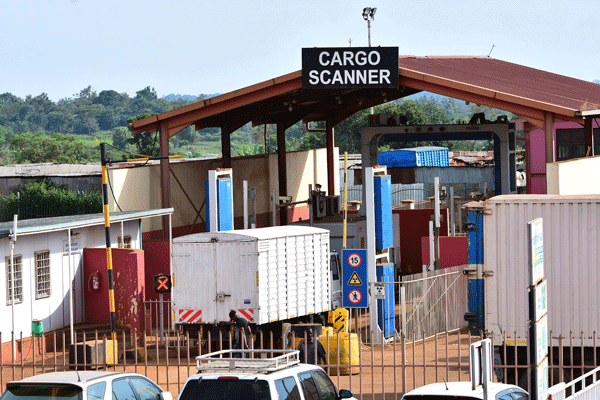Prime
How to shop for a used car

TESTING: Be sure to scrutinise the critical elements of a used car before you pay for it.
What you need to know:
The year may be as old and tired as you are of your car, is it time to shop for a “new” used car to start 2010? 2010 is billed to be an exciting year compared to this tough one we are closing. Africa will start on vibrant note, with The World Cup fever touching every fibre in society.
Daily Monitor Correspondent
Nairobi
The year may be as old and tired as you are of your car, is it time to shop for a “new” used car to start 2010? 2010 is billed to be an exciting year compared to this tough one we are closing. Africa will start on vibrant note, with The World Cup fever touching every fibre in society.
Everybody will be enthusiastic about something or the other. Most will be taking a closer look at their finances and planning new investments for the year after taking stock of 2009. What are you hoping to do? I know what I want and what I need. Yes, there is a difference. For starters what I need is a new orthopedic chair for my delicate back, but what I want and have been craving for is a “new” car to see me into the horizon that 2010 presents. While the orthopedic chair is easy to buy, a second hand car on the other hand can be a very daunting task.
Today we will look at some of the key points to check before you sign on the dotted line. It has evidently been a tough year for the motor industry and if you have been keen, you will have noticed the special offers in used car yards. While that may be attractive, you need to be extra careful when you go shopping.
Firstly, get a good friend who knows something about cars, dress up in clothes that are not your “Sunday Best” and head toward Nyayo National Stadium or Jam City Motors, whichever you fancy. When you get there, avoid showing obvious excitement when you see the car you like, it will only make bargaining more difficult. Just stroll around it as if you are a connoisseur of automobiles, don’t even smile, walk away and return after you have seen the other cars. When you get back let him or her make the first move. If they rush to shower praises on how super the car is, they could be trying to hide something.
Why are they selling it if it is all that? Acknowledge the accolades and keep a polite but knowing expression, then let the questions begin. How old is this car? Better still, what is the year of manufacture? What is the “real” mileage? How many accidents has it survived and so on, depending on the visible state of the car of course. If you really like the car and want to seriously discuss business, request for a few moments to check the vehicle.
Begin with the outside
Walk around the car and check the body panels and the roof. See if the scratches and dents are excessive. Check keenly for rust both on the outside and on the hinges of the doors, bonnet and boot. See if the gaps between the door and the body are even, if it is not it is a sign of sloppy assembly. It is important to know if the car you are about to own has been involved in an accident. It is easy to tell, just check the colour on the various panels, it should be the same everywhere.
The section that has been re-sprayed by an after market (jua kali) paint shop are unlikely to match the original factory baked paint job. Another way to check is using a magnet, if the dent was filled with plastic body filler then the magnet will not stick. Check for blisters too, they are sign of a badly executed paint job. Close and open the doors, boot and trunk to see if their hinges are operating effectively, especially the driver’s door.
Check that all door rubber seals are in an acceptable state and if the car has a sun-roof check that it opens and closes tightly too.. This is especially important because of the different weather conditions, you would be very disappointed to find your seats soaked in water or covered in dust after a few weeks out in the countryside.
Scrutinise tyres
The most telling sign of gross mistreatment of a car are the tyres. Scrutinise these very carefully. Be sure to look out for wear on the sides. If the car is relatively new with about 25,000km on the odometer, the original tyres should still be on. Check that they are all the same brand and size, if not, insist on an explanation. Please remember that some high performance cars will have different diameters for the front and rear. Turn the steering wheel to its full lock and examine for cuts and patches.
The wear should be relatively similar for all tyres if the owner remembered to rotate them at the major service intervals otherwise the drive tyres (front or rear wheel drive) will show more wear. On each tyre, lightly stroke the tread with the flat of your hand. If you feel raised areas, the tyre was not aligned properly.
Brakes
Check the discs are smooth and free of grooves or cracks. If they are excessively worn they will have a lip at the edge where the brake pad ends. Use the flash light you carried to check between the alloys or have the wheel removed completely. Remember, for everything wrong with the vehicle you get more bargaining points.
Lights and indicators
Ask you friend to stand outside the car and test all the lights. Try the full light and the low beam (dim). The indicators and the parking lights (reverse).
Accelerator pedals
Check the pedals for wear. If they look like those abandoned shoes at the back of your wardrobe, it means the car has been extensively used. Compare that with the claimed mileage. Look out for excessive wear of the clutch pedal, it could mean that the owner keeps his foot on it too long and this could result in a knocked up gearbox.




